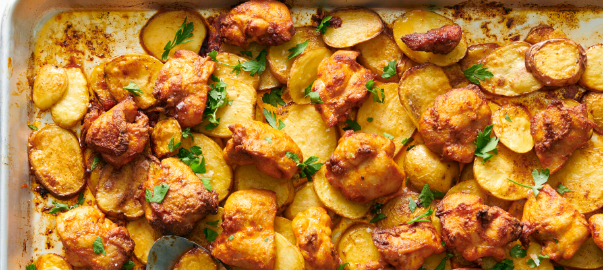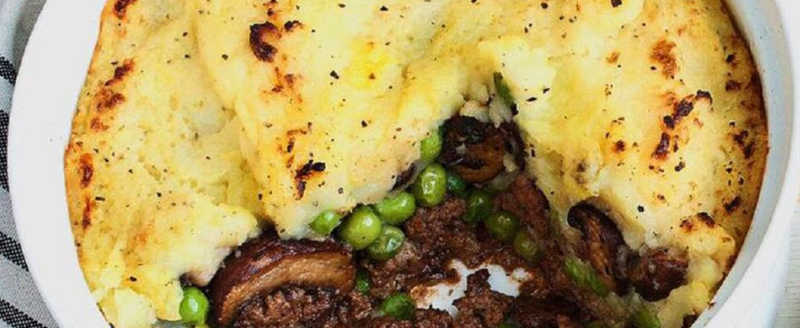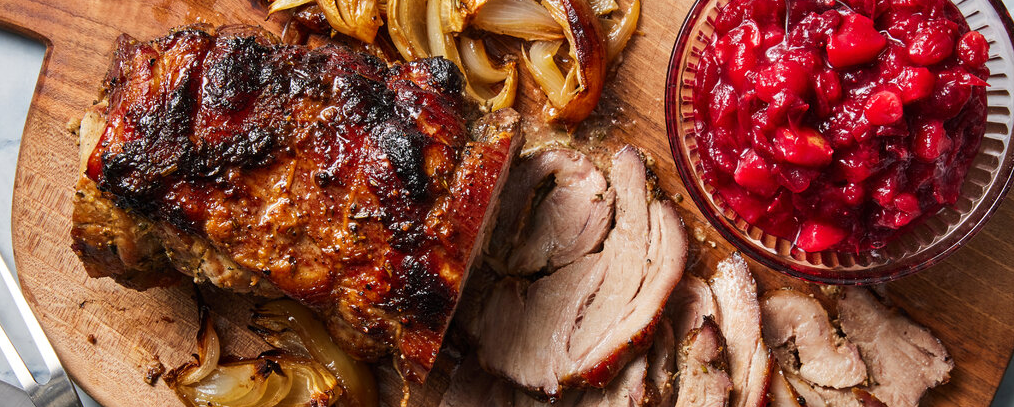Best Way to Cook Thin Pork Loin Chops
Best Way to Cook Thin Pork Loin Chops: Juicy Results with Cooking Time and Temperature Guide

Thin pork loin chops are quick to cook, economical, and—if done right—tender, juicy, and deeply flavorful. But they’re also notoriously easy to overcook. As a chef, I’ve cooked pork chops every way imaginable, and I can tell you: thin cuts are a test of your technique. With the right timing, heat, and preparation, they’re not only convenient but elegant. This guide is designed to walk you through every stage of the process, from prep to plating, to help you consistently achieve juicy, flavorful pork every time.
- Ingredients and Tools You’ll Need
- Preparing Pork Chops for Optimal Cooking
- Pan-Searing: The Best Method for Juicy, Crisp-Edged Chops
- Cooking Time and Temperature Table for Thin Pork Chops
- Oven-Baked Chops: When You Need Hands-Off Simplicity
- Broiling: High Heat, Fast Finish
- Microwave: Emergency Method (Not Ideal)
- Pressure Cooking for Ultra-Fast Results
- Sauces and Glazes That Elevate Pork Chops
- Seasoning Tips for Bold, Balanced Flavor
- Common Mistakes That Ruin Thin Pork Chops
- Delicious Variations You Can Try with Confidence
- How to Plate Thin Pork Chops Like a Pro
- Leftover Ideas: Turning Chops into Day-Two Magic
- How to Store and Reheat Thin Pork Chops the Right Way
- Pairing Pork Chops with Sides for a Complete Meal
- FAQ: 15 Common Questions About Thin Pork Chops (Chef-Approved Answers)

Ingredients and Tools You’ll Need
For thin pork loin chops (about ½ inch or less), you’ll need:
Ingredients:
- 4 thin-cut pork loin chops (bone-in or boneless)
- Salt and black pepper
- Garlic powder or fresh minced garlic
- Olive oil or neutral oil for searing
- Optional: paprika, mustard powder, herbs (rosemary, thyme)
Tools:
- Cast iron or heavy-bottom skillet
- Tongs
- Instant-read thermometer
- Sheet pan (if finishing in oven)
- Small saucepan (for sauce, if desired)
These tools and ingredients are enough to make a restaurant-quality meal in under 20 minutes.
Preparing Pork Chops for Optimal Cooking
Thin pork chops don’t give you much room for error. That’s why I focus on prep as much as cooking. I always remove the chops from the fridge 20 minutes before cooking, which helps them cook evenly. Then I pat them dry—moisture on the surface causes steaming, not searing.
Next, I season generously with kosher salt, freshly ground black pepper, and garlic powder. If I have time, I let them sit with seasoning for 10–15 minutes. This helps the meat absorb flavor and form a better crust.
If I want even more flavor, I’ll rub the chops with a bit of Dijon mustard or smoked paprika just before cooking. But in many cases, salt, pepper, and good technique are all you need.
Pan-Searing: The Best Method for Juicy, Crisp-Edged Chops
The stovetop is my go-to method for thin chops. I heat a tablespoon of oil in a heavy skillet (cast iron is ideal) over medium-high heat until the oil shimmers. I add the chops and don’t move them for at least 2 minutes. This gives a golden crust.
For chops under ½ inch thick, I cook them 2–3 minutes per side, depending on the heat and their size. I flip only once, using tongs, and check doneness with a thermometer. Once they hit 140–145°F (60–63°C), I remove them and rest for 5–7 minutes. During resting, they finish cooking and the juices redistribute.
This method gives perfect results every time: caramelized outside, tender inside.
Cooking Time and Temperature Table for Thin Pork Chops
| Method | Temperature | Time | Chef’s Tip |
| Pan-seared | Medium-high heat | 2–3 min per side | Flip once; rest after cooking |
| Oven-baked | 400°F (204°C) | 10–12 min total | Best with a sear before baking |
| Broiled | 500°F (260°C) | 3–4 min per side | Watch closely; easy to overcook |
| Pressure cooker | High pressure | 4–5 min + quick release | Use liquid; finish with sauce |
| Microwave | Medium-high | 2–4 min total | Emergency use only |

Oven-Baked Chops: When You Need Hands-Off Simplicity
Sometimes I want to make a bigger batch or avoid standing at the stove. That’s when I turn to the oven. I preheat to 400°F (204°C), sear the chops quickly (1 minute per side), then transfer them to a baking tray and roast for 6–8 minutes, depending on thickness.
You can also skip the sear and just bake them uncovered for 10–12 minutes, flipping halfway. Just be careful—without the sear, the exterior won’t be as flavorful. I always check with a thermometer and rest the chops after baking.
Broiling: High Heat, Fast Finish
Broiling thin pork chops is quick and efficient, but you need to be watchful. I preheat the broiler, position the rack about 6 inches from the top, and lay the chops on a foil-lined pan. I broil for 3–4 minutes per side, flipping once.
This method gives good caramelization but can dry the meat fast. I recommend brushing the chops with a bit of oil before broiling and keeping a close eye to avoid burning. Let them rest briefly after cooking.

Microwave: Emergency Method (Not Ideal)
I’ll be honest: I only use the microwave for thin pork chops when I’m in a hotel or testing recipes under constraints. That said, you can microwave them if absolutely necessary.
I place seasoned chops in a microwave-safe dish, cover loosely with a lid or wrap, and cook on medium-high (70%) for 2–4 minutes, flipping once halfway through. Let them rest, then slice thin. They’re edible, but lack texture and browning.
Pressure Cooking for Ultra-Fast Results
When I’m pressed for time but still want juicy meat, I turn to my pressure cooker. I add ½ cup broth or water, season the chops, and stack them in the pot on a trivet. I cook them on high pressure for 4–5 minutes, then use a quick release.
After cooking, I remove the chops and rest them for 5 minutes. If I want a glaze or sauce, I reduce the leftover liquid using the sauté function. This method is surprisingly good, especially for meal prep or when cooking multiple servings.
Sauces and Glazes That Elevate Pork Chops
A well-cooked chop doesn’t need much, but a good sauce takes it from simple to special. I often make a quick pan sauce right after searing the chops: deglaze the pan with wine, add garlic, Dijon mustard, and a splash of cream or broth. Simmer for 2–3 minutes until thickened.
For something sweet and savory, I reduce balsamic vinegar with honey and thyme until syrupy, then brush it over the chops just before serving. Mustard-maple glazes, lemon-herb dressings, or even simple garlic butter all work beautifully with thin pork.
The key is balance—acidity and richness help cut the mildness of pork.

Seasoning Tips for Bold, Balanced Flavor
Because pork is naturally mild, seasoning matters. I always salt the meat at least 10 minutes before cooking—it draws out moisture that then reabsorbs, improving texture and taste. I keep the seasoning simple but bold: salt, black pepper, garlic powder, and sometimes paprika or fennel seed.
When I want a global twist, I use spice blends: cumin and oregano for Mexican, five-spice powder for Chinese-style, or sage and mustard for something classic and cozy. The right seasoning makes thin chops memorable even without sauce.
Common Mistakes That Ruin Thin Pork Chops
Over the years, I’ve taught countless cooks how to handle pork chops, and I can confidently say that thin chops are the easiest to ruin—but also the most rewarding when done right. The most common mistake is overcooking. Because they’re thin, even 30 seconds too long can take your chops from juicy to leathery. That’s why I always cook with an instant-read thermometer and pull the chops off the heat once they hit 140°F (60°C), letting carryover heat bring them to a perfect 145°F.
Another mistake I’ve often seen is starting with cold meat straight from the fridge. Doing so results in uneven cooking—by the time the center is ready, the edges are dry. I always recommend resting the meat 15–20 minutes at room temperature before cooking.
Many home cooks also skip the resting period after cooking, thinking it’s unnecessary because the meat is thin. But I can tell you from experience, even a few minutes of rest makes a big difference—it allows the juices to redistribute, keeping the inside moist.
Lastly, under-seasoning is a flavor killer. Thin cuts don’t have a lot of fat, so they need help from spices. I season aggressively and early—sometimes even letting the chops sit for 10 minutes with salt and aromatics before cooking.
Delicious Variations You Can Try with Confidence
Thin pork chops are like a culinary blank slate. I’ve created dozens of variations in both restaurant kitchens and my home test kitchen, and each one brings something unique to the table. When I want something bright and Mediterranean, I rub the chops with lemon zest, olive oil, garlic, and fresh oregano, then sear and serve with a cucumber-tomato salad.
If I’m feeling bold, I go Korean-style: marinate the chops in soy sauce, sesame oil, grated pear, garlic, and a pinch of gochugaru (Korean chili flake). I pan-sear or grill them and serve with rice and kimchi. The contrast of savory-sweet pork and fermented vegetables is incredible.
For something warm and cozy, I make apple cider-glazed pork. I reduce apple cider with Dijon, thyme, and a splash of vinegar, then finish the seared chops in the pan with the glaze. This version is always a fall favorite and pairs beautifully with roasted root vegetables.
When I want fast flavor with zero marinating, I’ll just coat the chops in Cajun seasoning or a Moroccan blend like ras el hanout. Served with couscous or a crisp slaw, they feel exotic and exciting without extra prep.
The beauty of thin pork chops is that they take on flavor fast and cook quickly—perfect for both experimentation and simplicity.

How to Plate Thin Pork Chops Like a Pro
Plating might seem like an afterthought, but in professional kitchens, it’s often what separates “homey” from “restaurant-worthy.” When I serve thin pork chops, I always start by thinking about color, height, and balance. If I’m slicing the chops, I fan the pieces out on a warm plate and angle the slices slightly over a smear of sauce or puree—this draws the eye and adds elegance.
When serving whole chops, I position them with the bone (if present) facing outward for a natural handle and visual appeal. I avoid pouring sauce directly over the meat unless it’s a glossy glaze; instead, I spoon it beside the chop to keep the crust intact and the plate clean.
I add a bright garnish—fresh herbs like thyme or parsley, or quick-pickled onions or apple slices—to provide contrast in both color and acidity. A final crack of black pepper over the dish adds a rustic finishing touch.
Sides also matter. If I’m serving with mashed potatoes, I use a ring mold or swirl for shape. For roasted veggies or slaw, I cluster them neatly. The goal is always the same: make it look intentional. When a plate is composed thoughtfully, it elevates the simplest dish.
Leftover Ideas: Turning Chops into Day-Two Magic
If you know how to treat leftovers, a simple pork chop can become tomorrow’s star. I’ve developed a habit of cooking a few extra chops on purpose, because I know I can reinvent them into quick, delicious meals that feel entirely new.
One of my favorite uses is slicing the cold pork thin and layering it on a sandwich with grainy mustard, arugula, and caramelized onions. Toasted sourdough or ciabatta works great. Another fast option is to dice the meat and toss it into fried rice with scallions, eggs, and soy sauce—it’s flavorful, fast, and satisfying.
For lighter meals, I chop leftover pork and add it to a green salad with sliced apples, goat cheese, and a honey-mustard vinaigrette. The pork gives the salad substance and protein without feeling heavy.
I’ve also used leftover chops in tacos—just reheat gently, slice thin, and pair with pickled red onion, cabbage, and a spicy crema. The contrast between crispy edges and creamy toppings makes this one a crowd-pleaser.
Leftovers don’t need to be boring if you approach them like building blocks for something new.
How to Store and Reheat Thin Pork Chops the Right Way
Proper storage and reheating are crucial—especially with thin pork chops, which dry out faster than thicker cuts. I always cool the meat completely before storing, usually within 30 minutes of cooking. Then I wrap it tightly in foil or place it in an airtight container with a spoonful of pan sauce or a splash of broth. That little bit of moisture helps preserve the texture.
In the fridge, pork chops keep for up to 4 days. For longer storage, I freeze them in individual portions—wrapped tightly and labeled. When thawed overnight in the fridge, the texture is almost as good as fresh if reheated properly.
To reheat, I prefer a covered skillet over low heat with a bit of broth or water. This creates steam and warms the meat gently. I avoid the microwave unless I’m short on time—then I reheat at 50% power, covered with a damp paper towel, in 30-second intervals.
Never overheat. The goal is warm, not hot—once the pork reaches about 120°F (49°C), I take it off the heat. Overheating cooked pork is the fastest way to undo all your work.
Pairing Pork Chops with Sides for a Complete Meal
When building a plate around pork chops, I aim for balance in richness, texture, and flavor. Thin pork chops are light and lean, so I like pairing them with carb-forward sides and something acidic or green.
For a classic pairing, I serve them with mashed sweet potatoes and roasted green beans. The sweetness complements the pork, and the beans provide crunch. In summer, I switch to a corn and tomato salad with herbs—it’s refreshing and brings acidity.
If I’m going for comfort food, I make buttered noodles or creamy polenta and drizzle pan juices or glaze over both meat and starch. Add a sharp slaw or vinaigrette-dressed greens on the side, and the richness is beautifully balanced.
For more international flavors, I pair Asian-glazed chops with steamed jasmine rice and sesame cucumber salad, or Mediterranean versions with lemon couscous and grilled vegetables. The secret is to complement—not compete with—the seasoning on the chops.
Ultimately, you want your plate to feel complete but not crowded, filling but not heavy. When in doubt, add a pop of citrus, fresh herb, or light sauce to tie it all together.
FAQ: 15 Common Questions About Thin Pork Chops (Chef-Approved Answers)
How do I keep thin pork chops from drying out?
I’ve learned that temperature control is everything. Use a thermometer, cook to 140–145°F, and always let them rest. Even one extra minute on the heat can dry them out.
Can I marinate thin pork chops?
Yes, but keep it short—30 minutes to 1 hour max. I’ve tried longer, and acidic marinades can start breaking down the meat too much, especially since the chops are thin.
Should I use bone-in or boneless chops?
Both work, but I personally prefer bone-in for flavor and moisture. Boneless are faster and easier to cut, though. Use what’s available—but treat them gently.
What oil is best for cooking them?
I usually go with a neutral oil like grapeseed or canola for high-heat searing. Olive oil works too, but don’t use extra virgin for searing—it burns.
Can I freeze cooked pork chops?
I do this often. Wrap them well and freeze for up to 2 months. Thaw slowly in the fridge and reheat gently with a bit of broth or sauce.
How do I reheat them without overcooking?
I reheat sliced pork gently in a pan with a lid and a splash of broth. Microwave works in short bursts at 50% power—just don’t overdo it.
Can I bread and fry thin pork chops?
Absolutely. I dredge them in flour, egg, then breadcrumbs, and fry in shallow oil. It’s crisp, quick, and comfort food at its best.
What’s the best pan to use?
I’ve tried them all—cast iron is king. It gives you even browning and holds heat well. Nonstick works too, but you lose a bit of that crust.
Can I cook them straight from the fridge?
Technically yes, but I don’t recommend it. I always let them rest at room temperature for 15–20 minutes. They cook more evenly that way.
Is 145°F safe for pork?
Yes. USDA says 145°F with a rest is fully safe. I’ve cooked hundreds of chops this way and never had an issue—just juicy results.
Do I need to pound them thinner?
Usually no—most “thin” chops are ready to go. If one is thicker than the rest, I’ll give it a quick pound with a meat mallet for even cooking.
How do I get a good sear without drying them out?
Use high heat, preheat your pan well, and don’t flip too soon. Two minutes undisturbed is usually perfect. Rest them afterward, and you’ll have a golden crust with a juicy center.
Are they good for meal prep?
Yes—thin chops reheat well when handled right. I store them with sauce or glaze, slice before storing, and use them in bowls or sandwiches.
What sides go best with thin pork chops?
I love pairing with roasted vegetables, mashed potatoes, or a crisp apple slaw. Anything that adds texture and brightness will balance the richness.
What’s your go-to seasoning blend?
For everyday chops, I use salt, pepper, garlic powder, and a touch of smoked paprika. If I want something more elevated, I add fennel seed, mustard powder, or a rosemary-garlic rub.



Post Comment